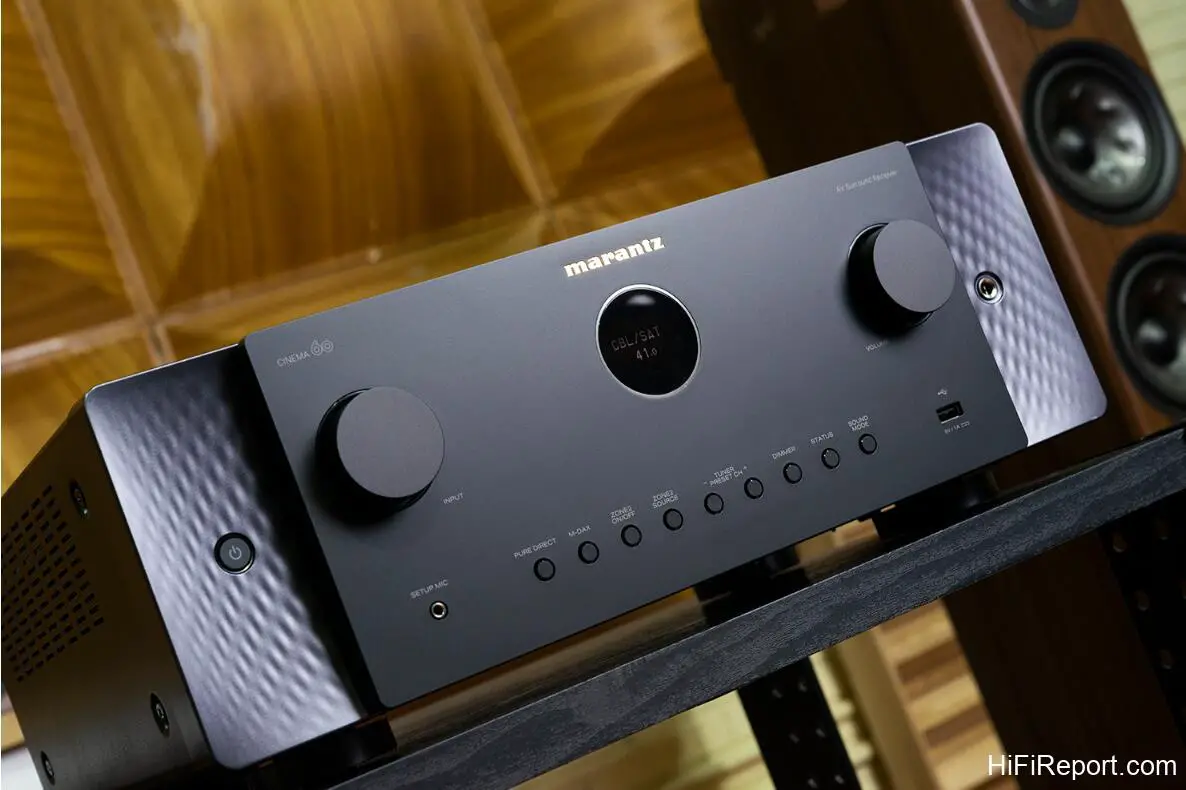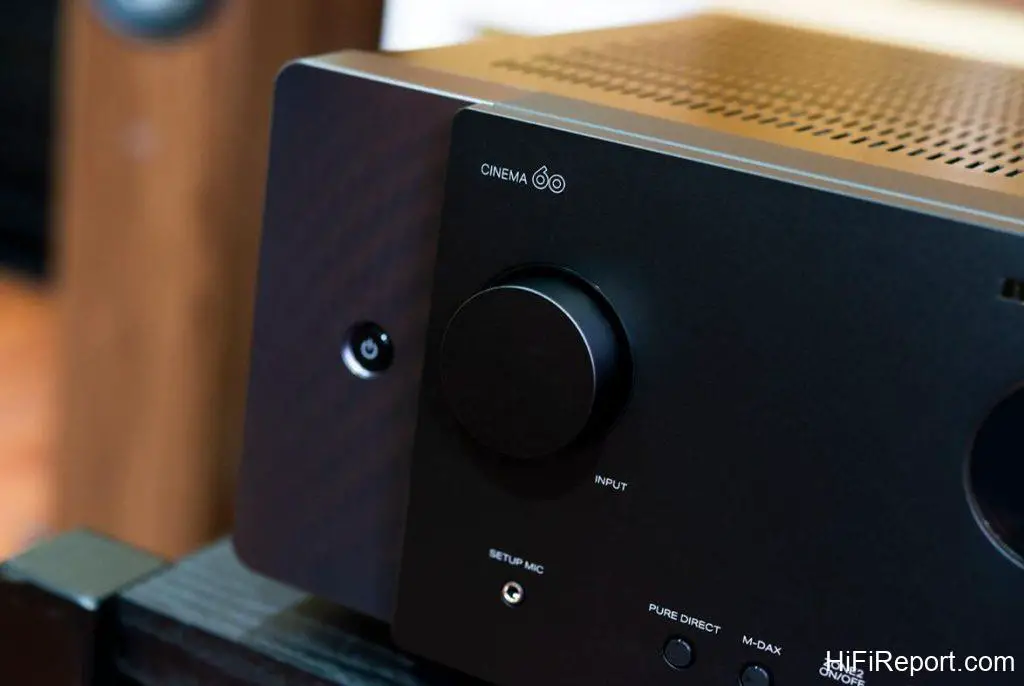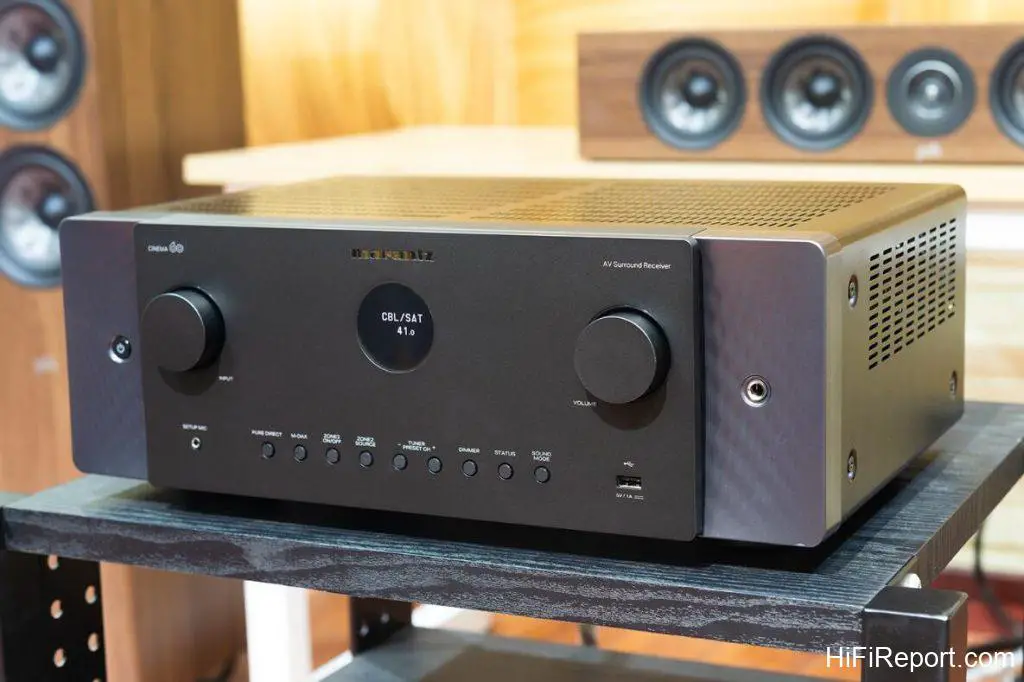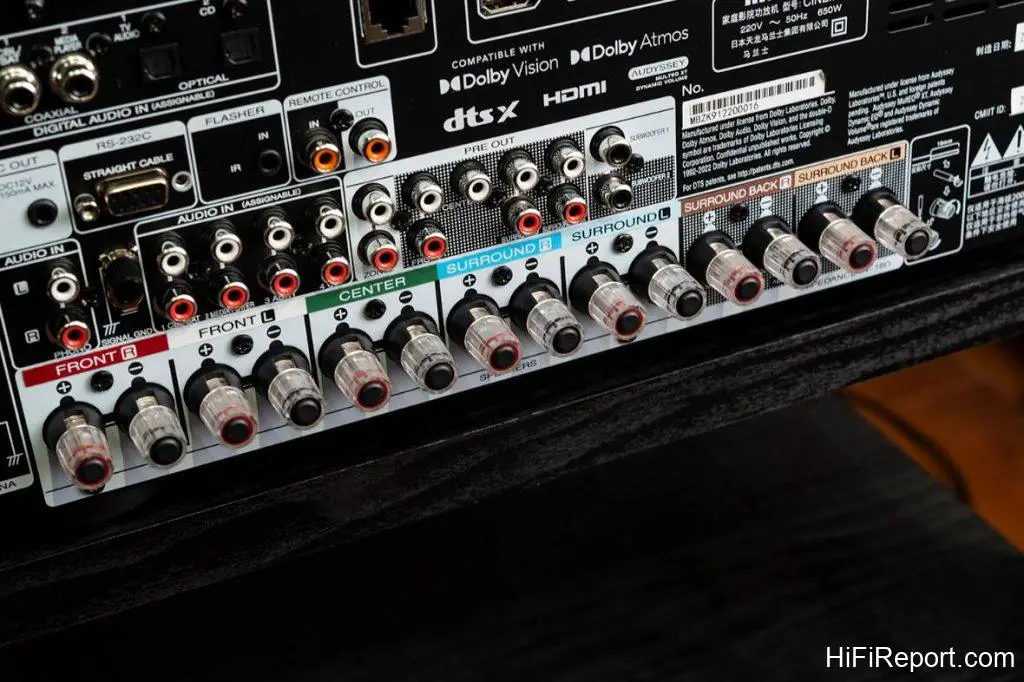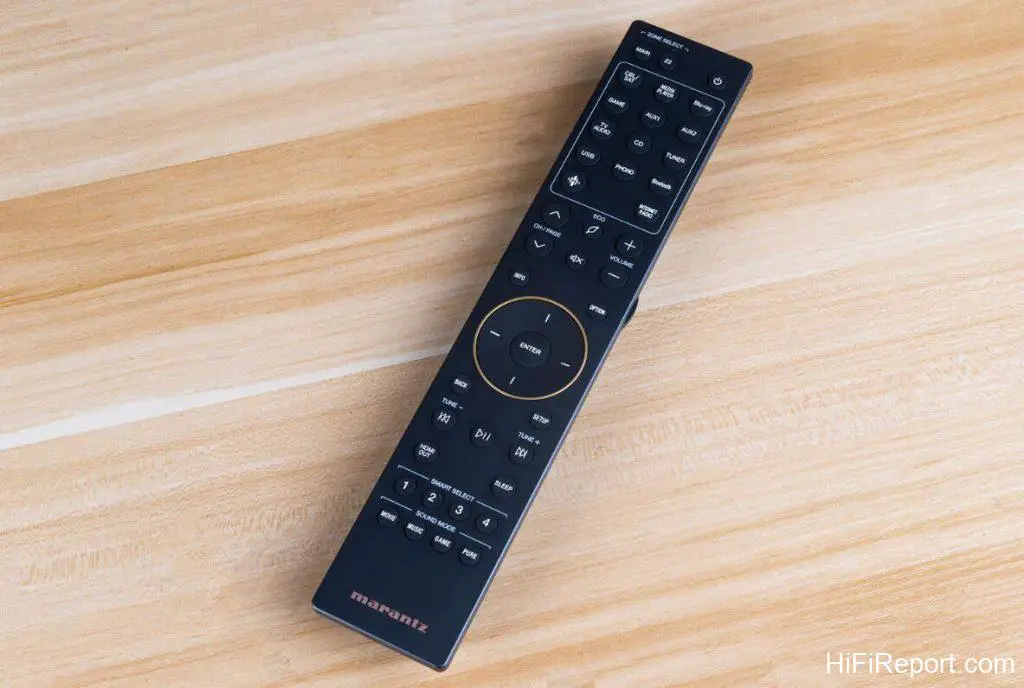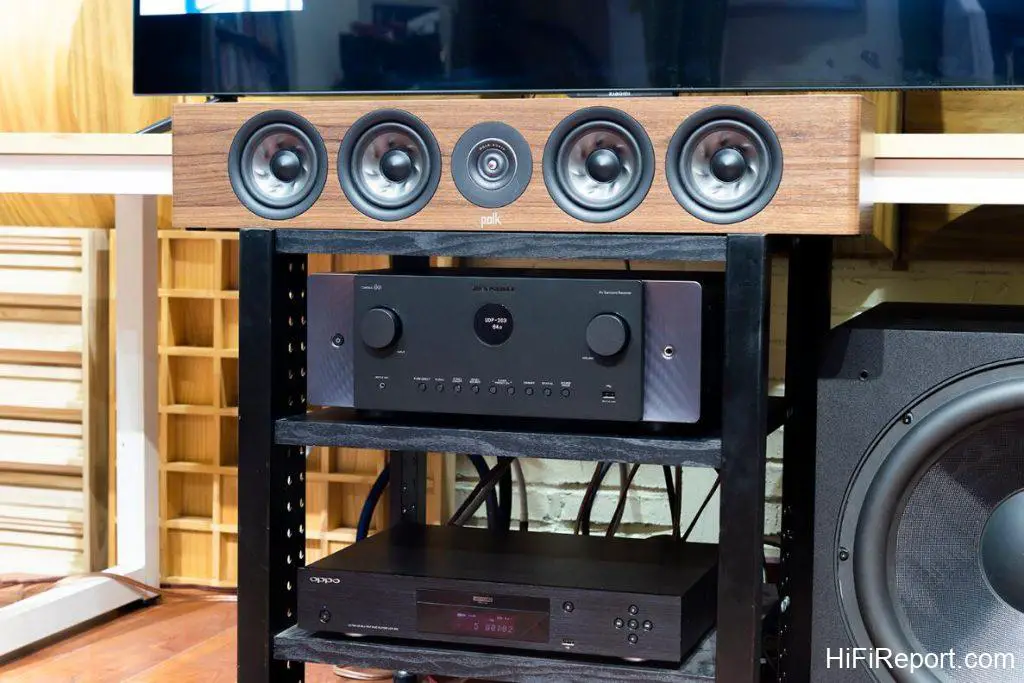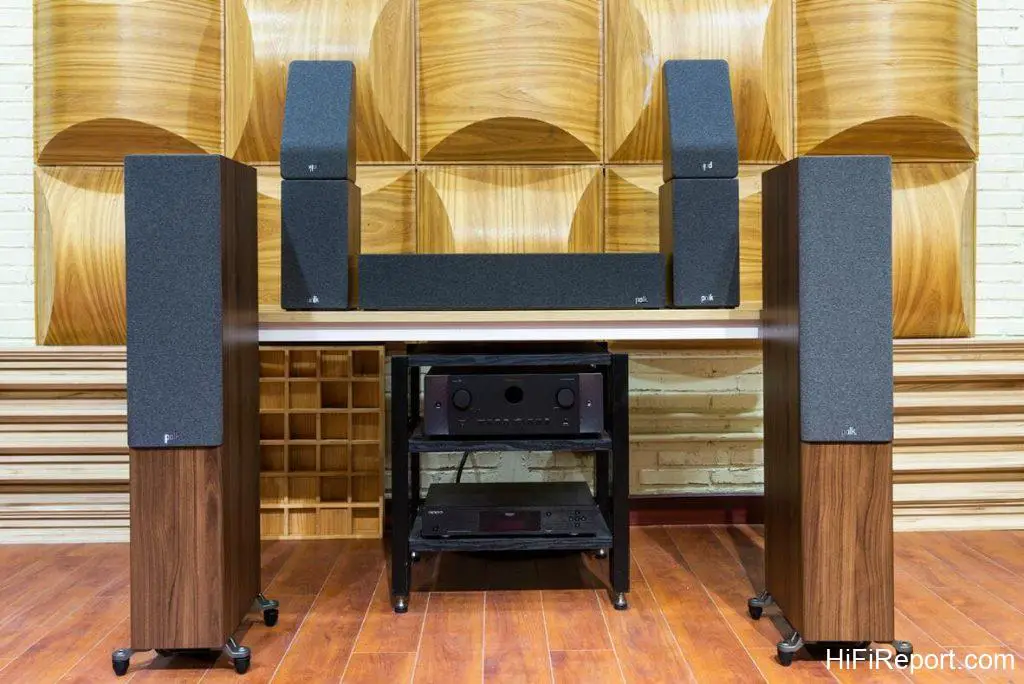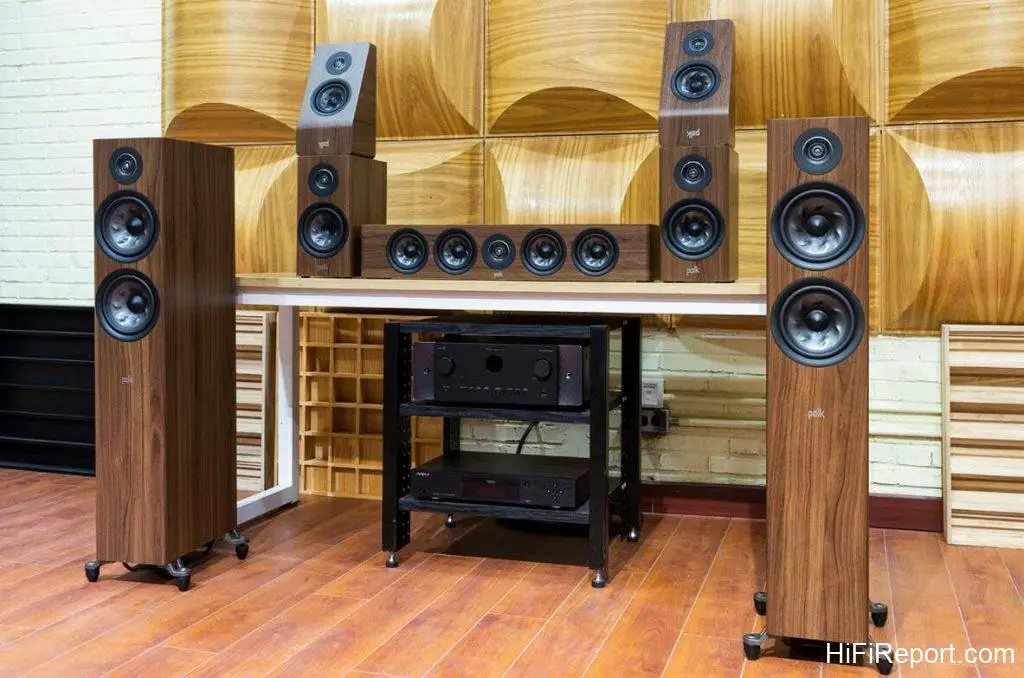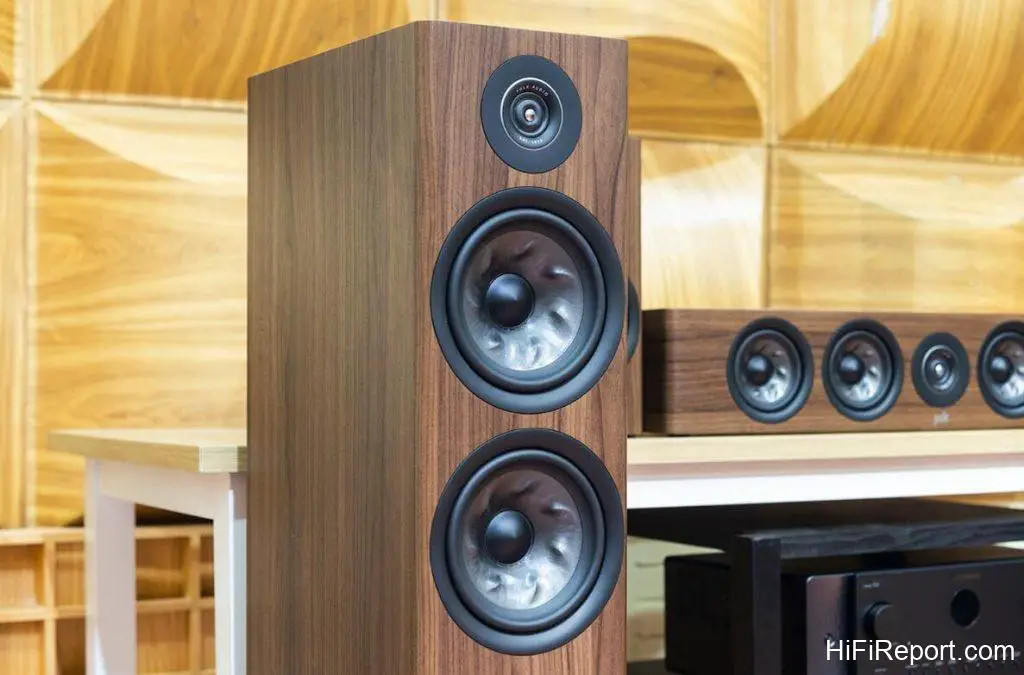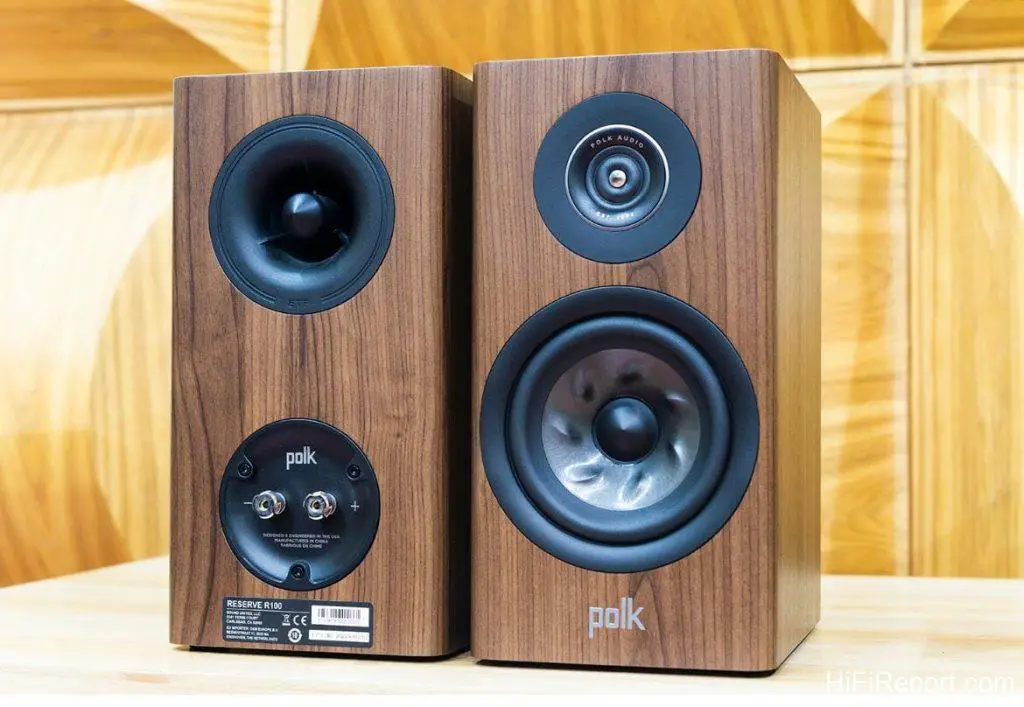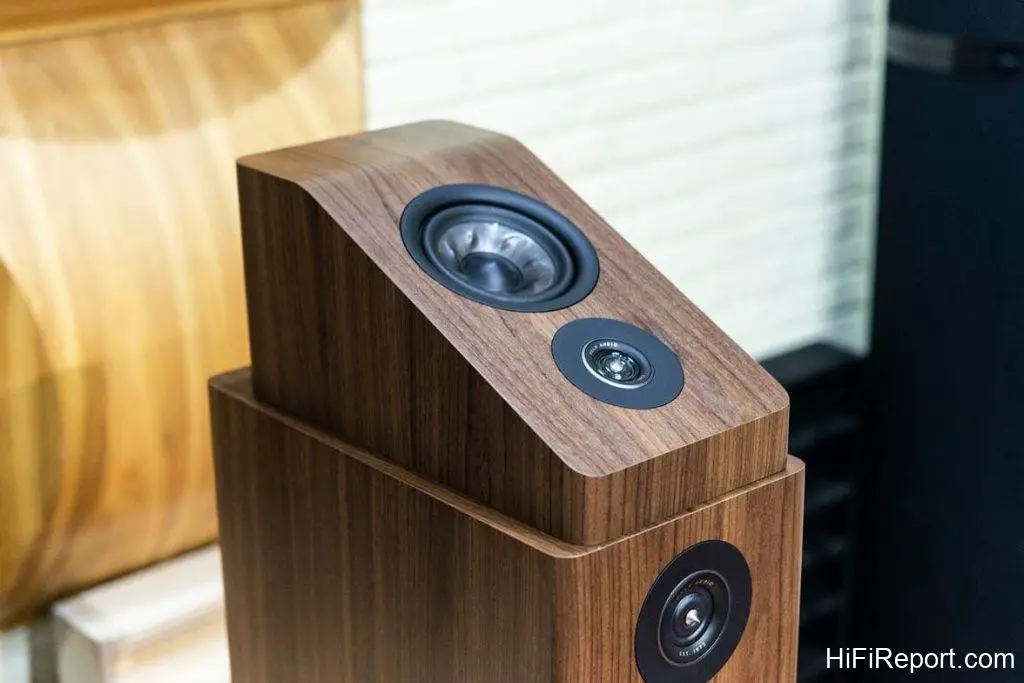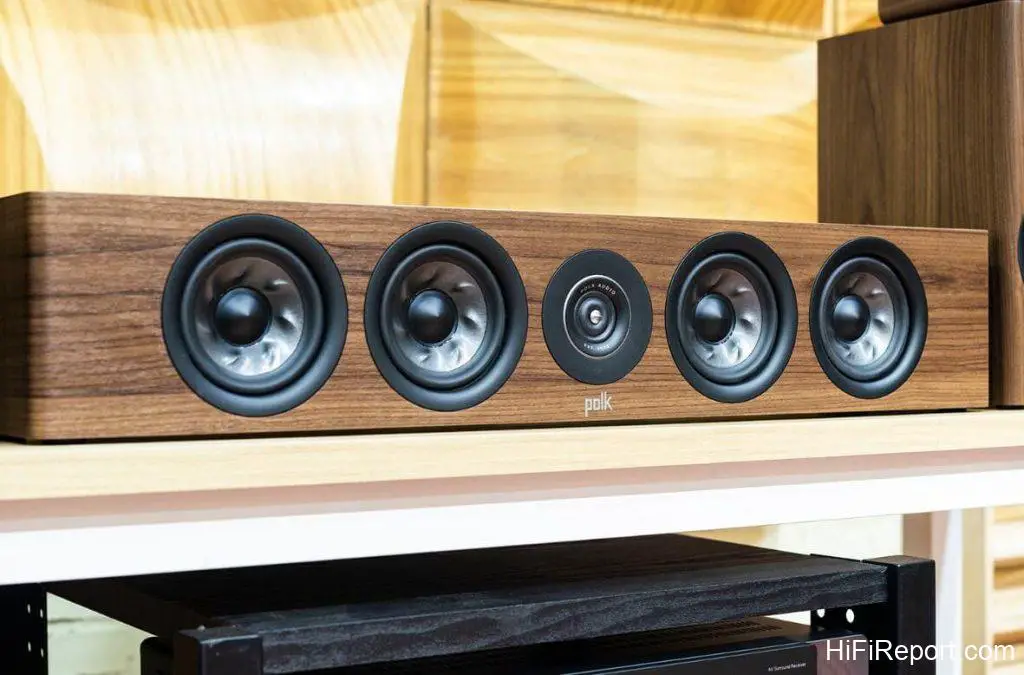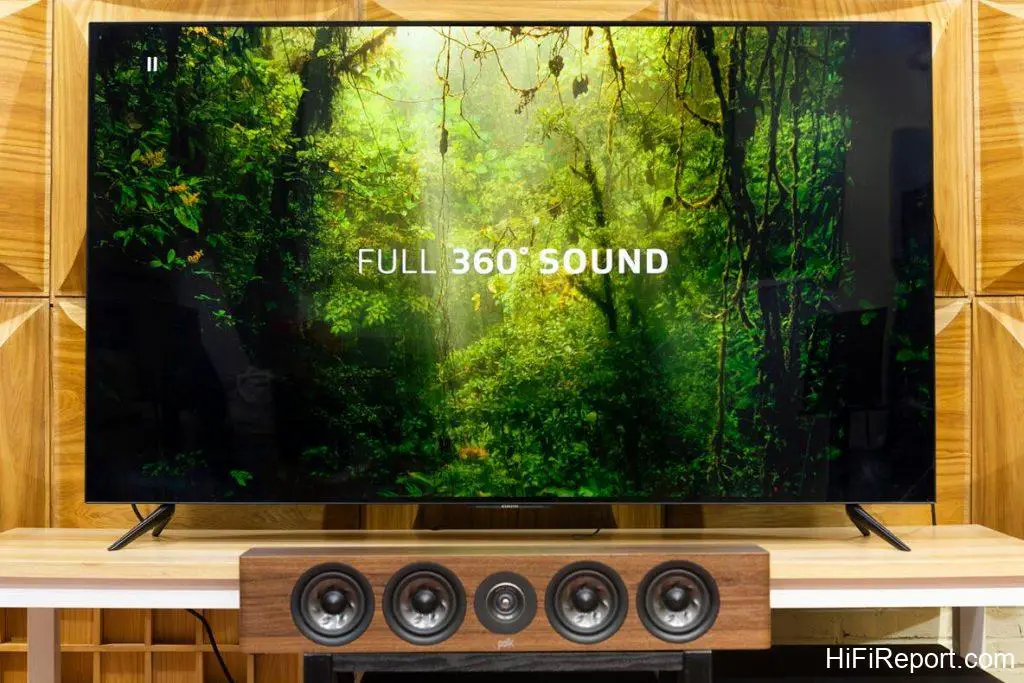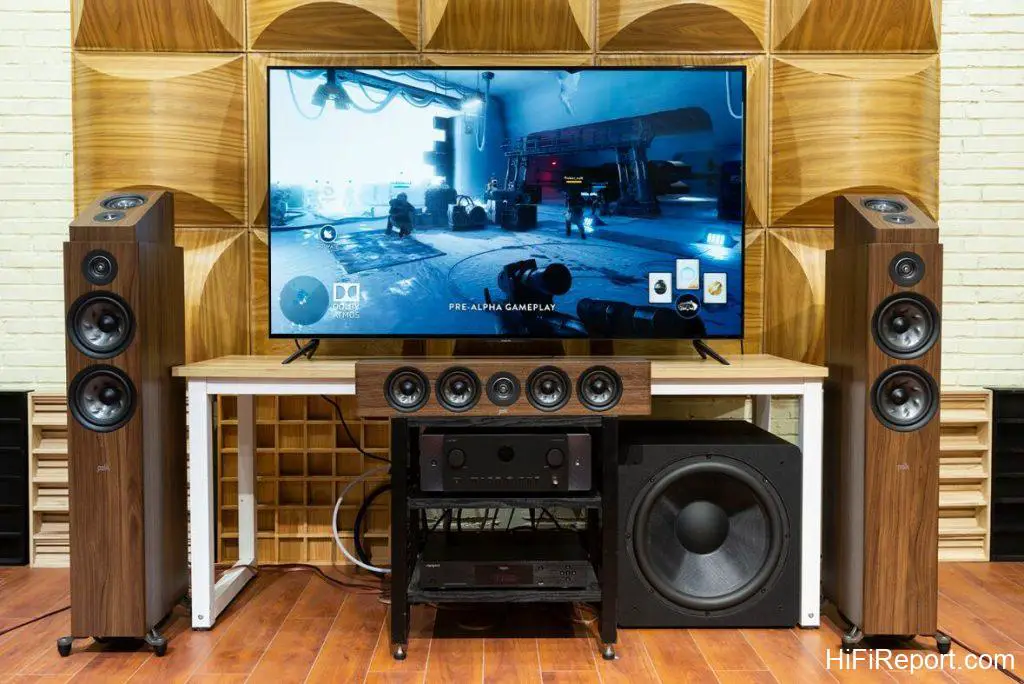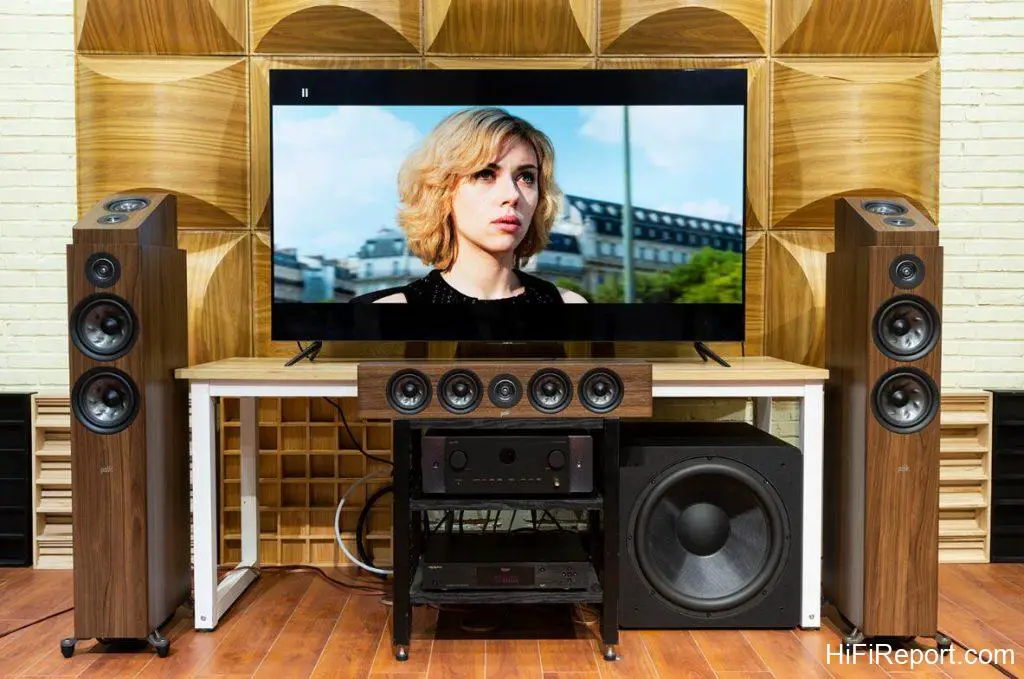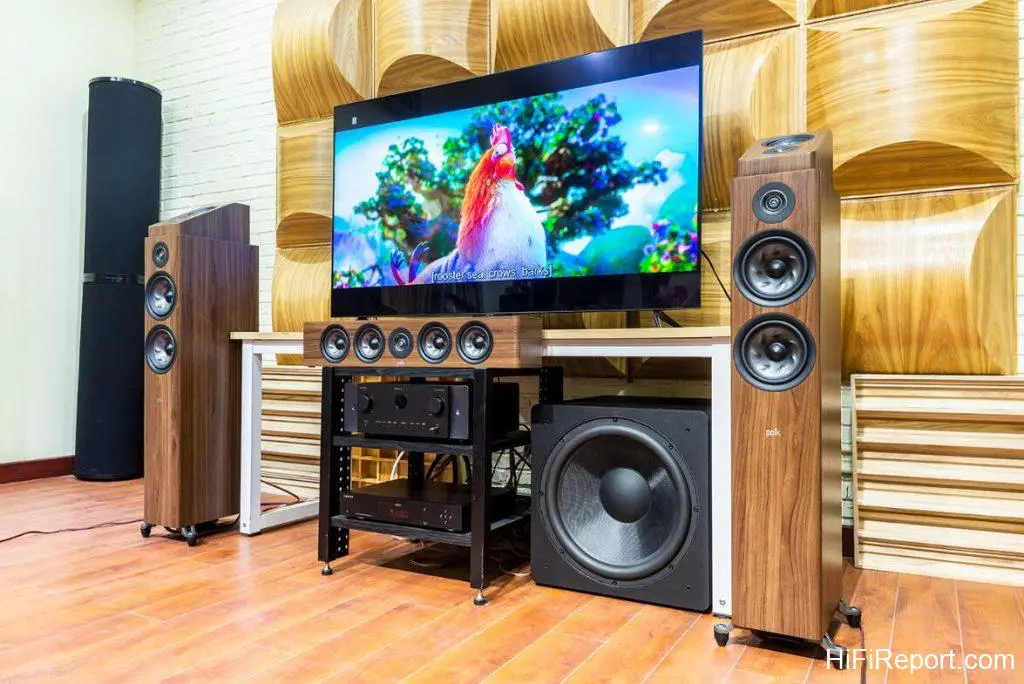Marantz Cinema 60 7.2-Ch Receiver Review
Renowned high-end audiovisual brand Marantz has recently unveiled its new CINEMA series, positioning itself as a benchmark for luxurious design, superior performance, and exceptional sound quality in home theater amplifiers. The new lineup boasts a refreshing exterior design and technological upgrades, marking a splendid transformation for Marantz’s home cinema products. Joel Sietsema, the President of Marantz, stated, “The CINEMA series inherits the brand’s signature traits, including unparalleled performance, meticulous craftsmanship, and timeless elegance.”
The Marantz CINEMA series consists of five products, comprising the flagship preamplifier AV 10 and its matching flagship power amplifier AMP 10, as well as the integrated amplifiers CINEMA 40, CINEMA 50, CINEMA 60, and CINEMA 70S.
The naming convention of the new products deviates from Marantz’s previous cinema amplifier models, where a smaller numerical value in the CINEMA series denotes a higher-end product. Consequently, the CINEMA 40 is the flagship integrated amplifier, while the CINEMA 70S represents an entry-level option, with the “S” in its model denoting its slimline design.
Design
At first glance, the Marantz CINEMA series draws inspiration from the exquisite design of the Hi-Fi product line’s new Mode series. The concave curves and intricate patterns at both ends of the front panel and the well-arranged control area in the middle exude a sense of high-end artistic flair.
This design element may become a signature feature of future Marantz products. Having had positive experiences with multiple Marantz products in the past, I’ve been closely following the developments of the CINEMA series since its release. I am fortunate to be among the first in the country to witness the Marantz CINEMA 60 in action.
With the gradual 8K ultra-high-definition video content and the widespread popularity of 4K/120fps high-refresh-rate gaming, the hardware that matches such visual advancements no longer seems overly futuristic. For video quality enthusiasts, pursuing an extremely realistic and natural picture with smooth motion effects makes 8K resolution and 120fps high-refresh-rate the standard configurations for display devices nowadays.
As the visual experience approaches perfection, the audio experience must stay caught up. The amplifier plays a crucial role as the core component of modern home theater systems. The CINEMA 60 boasts 6 HDMI inputs, with 3 supporting 8K/60Hz and 4K/120Hz pass-throughs, enabling the simultaneous connection of three video players or gaming consoles.
This versatility sets it apart from other products that offer only one HDMI port supporting 8K and high refresh rates. It’s important to note that HDMI cables are not hot-swappable, and forcefully unplugging them while the devices are powered on may cause damage. Switching between multiple signal sources becomes more convenient with the Marantz CINEMA 60’s 3 8K/60Hz and 4K/120Hz pass-through HDMI ports.
The CINEMA 60 features seven channels of rear amplification output and two subwoofer outputs, making it a nominal 7.2-channel integrated amplifier. However, its capabilities are wider than forming a conventional 7.2-channel audio system.
We can customize the last two sets of rear amplifiers in the speaker configuration menu, achieving a 5.2.1/5.2.2 immersive sound mode. The CINEMA 60 also has various immersive sound modes, including Front Height, Front Dolby, Surround Dolby, Top Center, and Top Front modes, catering to living room home theaters or compact dedicated audio rooms. It supports decoding and playback of panoramic audio formats like Dolby Atmos and DTS: X.
The Marantz CINEMA 60 is ideal for setting up a panoramic sound cinema system in a space not exceeding 30 square meters. As all new movies are now produced with dramatic sound, and some online video platforms offer resources with panoramic sound effects, incorporating the panoramic sound mode is essential when building a home theater today.
Adding sound from the audience’s top enhances the immersion experience compared to traditional flat surround sound. Depending on the actual usage environment, the specific mode from the ones mentioned in the previous section should be chosen.
For the Marantz CINEMA 60, each of its seven channels employs a separate high-current power amplifier, delivering 100W of output power at 8 ohms per channel. This is sufficient to handle most speakers on the market while providing abundant energy reserves to reproduce dynamic sound effects in movies. The amplifier also features an energy-saving mode that maintains stable sound quality while reducing real-time power consumption through specialized internal algorithms.
The CINEMA 60 is equipped with Marantz’s proprietary HDAM (Hyper Dynamic Amplifier Module), originally a circuit design reserved for flagship Hi-Fi products with demanding sound quality requirements. Over time, this technology has been incorporated into cinema amplifiers as it ensures a wider dynamic range, lower noise, and faster conversion rates, resulting in richer sound layers and details.
Additionally, the amplifier supports another Marantz patent innovation, the feedback topology technology, which provides wide closed-loop bandwidth and higher conversion rates, leading to lower distortion in reproducing high-spec audio information.
All of Marantz’s cinema amplifiers come with the Audyssey room calibration system, though the specific features may differ between product levels. The CINEMA 60 features Audyssey MultEQ XT, a more advanced room calibration solution with eight measurement points, offering more detailed parameter settings and resulting in an audio calibration that approaches ideal conditions.
Before watching a movie for the first time, executing Audyssey is a necessary step. Connect the provided dedicated microphone to the MIC position on the bottom left corner of the amplifier’s front panel. The amplifier will automatically switch to the Audyssey setup interface, and the corresponding menu will appear on the display.
By default, you will allocate amplifiers and select speakers according to your setup. After adjusting the settings, you can proceed with Audyssey’s sound measurement. Two points to consider during this process: Firstly, for the front Dolby panoramic sound system set up in this review, you will need to set the distance from the reflective speakers to the ceiling in Audyssey for calibration calculation.
Secondly, ensure the microphone’s height is at ear level when sitting on the sofa, simulating the listening position. Then, you can follow the diagram’s eight measurement points to obtain the optimal sound effect according to Audyssey’s current environment assessment.
Users can also make fine adjustments to the individual speaker in manual mode. Alternatively, they can manually set the speaker distances and subwoofer crossover points and then run Audyssey again to achieve the best personal listening experience for the system. The CINEMA 60 can store two sets of Audyssey calibration data and switch between them in real-time based on the listening content and environment.
During testing, it was observed that users could adjust the audio while watching a movie. By selecting the OPTION on the remote control, a settings menu appears in the upper right corner of the screen. This menu allows for adjustments such as dialogue enhancer, channel levels, tone, audio delay, etc., providing an intuitive and convenient way to experience the effects of the adjustments in real-time.
Despite being a cinema-integrated amplifier, the Marantz CINEMA 60 also includes music playback functionality, maintaining Marantz’s traditional Hi-Fi quality for music reproduction. In terms of wireless connectivity, it supports convenient and quick music file streaming via AirPlay 2 or Bluetooth, and it comes with the advanced multi-room music system HEOS, which allows users to stream content from various streaming platforms such as TIDAL, QQ Music, Spotify, Amazon Music, etc., to the CINEMA 60 for playback.
What caught my attention about the CINEMA 60 is its support for playing high-resolution, lossless audio files, including ALAC, FLAC, and WAV up to 24bit/192kHz, DSD 2.8MHz, and 5.6MHz files. Users can connect a USB drive or external hard drive containing high-resolution audio files to the USB port on the bottom right corner of the front panel for playback. The “Music Server” feature also allows users to connect to shared file devices within the local area network for audio playback.
Connections
The Marantz CINEMA 60 has audio and video input/output interfaces, including 6 HDMI inputs that support HDR10+, Dynamic HDR, ALLM, VRR, QMS, and QFT. Among them, 3 HDMI inputs support 8K/60Hz and 4K/120Hz pass-through. There are 2 HDMI output interfaces, one of which features ARC/eARC audio return channel functionality and can directly recognize and decode panoramic sound audio formats from TV programs, providing a convenient and high-quality auditory experience when watching online videos.
The digital input section includes two coaxial and two optical inputs for connecting older TV models or professional audio equipment. The analog input section consists of 4 sets of RCA inputs and an integrated phono input with an HDAM equalizer stage, allowing users to experience the charm and nostalgia of analog vinyl records conveniently.
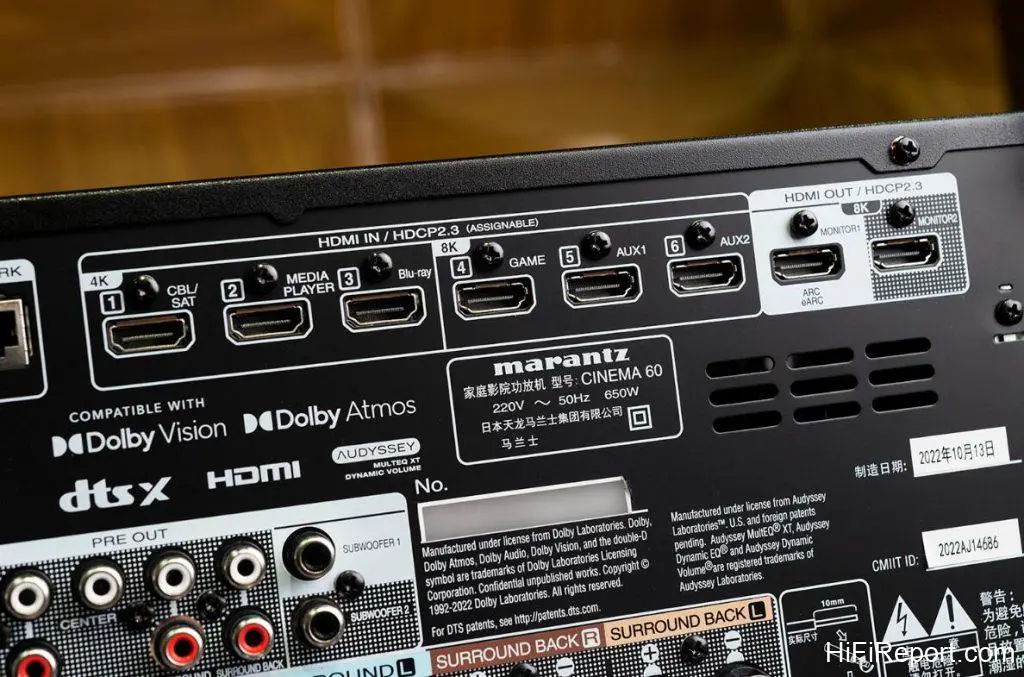
The amplifier has complete 7.2-channel preamp outputs and a set of ZONE2 terminals, making it convenient for users to connect a secondary power amplifier in another area and share audio sources. The CINEMA 60 supports dual subwoofer outputs, generally resulting in a more relaxed and natural low-frequency texture than a single subwoofer. Audyssey Sub EQ HT technology can independently calibrate the connected subwoofers to achieve a more accurate low-frequency response.
Equipped with dual WiFi and Bluetooth antennas, the Marantz CINEMA 60 can receive wireless network signals from a router up to 10 meters away, even with two walls in between. However, to ensure smooth and stable data transmission, it is recommended to use a wired network connection. This post is from HiFireport.com.
Sound Performance
To fully unleash the potential of the CINEMA 60, it has been paired with a set of 7 Polk Audio Reserve series speakers, including the R600 main speakers, R350 center speakers, R100 surround speakers, and R900 reflection speakers. As Polk Audio’s sub-flagship series, the Reserve series boasts a stylish design that easily integrates into various home environments.
These speakers feature Polk Audio’s latest advanced audio technology, particularly their signature Pinnacle ring radiator tweeters and Turbine mid-bass drivers, which provide a solid foundation for complete sound reproduction. As part of Polk Audio’s 50th-anniversary celebration, they have also released a limited-edition bookshelf speaker R200AE, showcasing top-notch craftsmanship both in its exterior and internal materials.
The front left, and right speakers are crucial in a home theater audio system as they carry most of the audio information. The high-quality three-way, two-crossover floor-standing speakers R600 are more than capable of handling this responsibility.
These floor-standing speakers come with adjustable rubber feet, providing excellent stability while protecting the floor from scratches. The entire series of speakers come equipped with 1-inch Pinnacle ring radiator tweeters featuring precision-tuned waveguides to enhance high-frequency energy dispersion and reduce unnecessary resonance through acoustic damping. This results in a clear, delicate, and low-distortion high-frequency performance.
The Polk Audio R600 also features two outstanding 6.5-inch Turbine mid-bass drivers. With their special Turbine geometry and polymer diaphragms, these drivers effectively increase the intensity and smoothness of the sound. During testing, the low-frequency sensation and impact created by the R600 were quite impressive, even with the subwoofer turned off and the main speakers set to large (full-range signal).
Although it may not have the same overwhelming power as an independent subwoofer, the punch and explosive impact were still palpable. Users living in apartment buildings can enjoy movies using this speaker setup without worrying about complaints from neighbors downstairs.
The center speaker, R350, is primarily responsible for dialogue reproduction in the home theater audio system. The R350 used in this trial is a super-slim center-channel speaker suitable for living room home theaters. It can be placed on the TV cabinet without occupying much space, and it comes with wall-mount brackets on the back, making it compatible with wall-mounted TVs. Equipped with four 4-inch Turbine mid-bass drivers, it delivers rich mid-frequency vocal performance.
The Reserve series compact bookshelf speakers R100 were used for the surround speakers. These speakers feature a 5.25-inch Turbine mid-bass driver, making them suitable for near-field two-channel Hi-Fi and home theater surround sound applications, providing a comprehensive sound performance. Additionally, the X-Port (ETF), Polk’s latest patented technology, is employed in the reflex hole position to enhance low-frequency smoothness and transient response.
The R900 reflection speakers are designed for panoramic sound cinemas, providing great versatility. With the Marantz CINEMA 60 amplifier as the centerpiece, the R900 speakers can be paired with the front main speakers to form a front Dolby setup or used with the surround speakers to create a surround Dolby setup.
They can also be wall-mounted for front-height applications. Even ceiling installation is a good choice, as the angled high/low-frequency drivers ensure more accurate sound transmission directly to the listener’s ears.
The setup forms a 5.2.1 panoramic sound system, resembling a high-end living room home theater. The Marantz CINEMA 60 integrated amplifier powers the 7 Polk Audio Reserve series speakers, with a 75-inch LCD TV as the display device and an OPPO UDP-203 4K video player as the signal source. The Audyssey room calibration follows the earlier steps once all devices are connected and set up. This results in a satisfying movie-watching experience after fine-tuning through actual listening.
Whenever I set up a new home theater system, I always start by test-playing the familiar Dolby demo disc. This system performs exceptionally well when presenting tropical rainforest scenes, with the immersive sensation of insect calls, birds fluttering around, thunderstorms overhead, and raindrops falling, making it feel truly immersed in the jungle.
While the overhead sound effects are simulated through the Polk Audio R900’s virtual reflection sound, the sound details and positioning are satisfying, thanks to the outstanding performance of the CINEMA 60 and the accurate algorithm of Audyssey.
In the baseball-hitting-the-glass scene, the demanding dynamic range undoubtedly puts great tests on the amplifier and speakers. It must ensure ample driving energy while maintaining excellent transient response and detail reproduction. During the actual test, the powerful impact of the glass shattering can be felt clearly.
As the camera moves through the shattered glass, the baseball passing by the ears is realistic and smooth, while glass fragments hitting the metal lampshade and the floor are equally textured. Additionally, the narration in the scene is clear and three-dimensional, making it feel as if the speaker is right there, conveying emotions naturally and realistically. It must be said that Marantz’s home theater amplifier excels in reproducing human voices and dialogues.
The gaming scene in the demo disc best reflects the advantages of a high-quality multi-channel home theater system, Marantz CINEMA 60. Compared to traditional stereo sound systems, it can accurately determine the enemy’s position through the footsteps, and the all-around Dolby sound effects enhance the immersion of the gaming experience. Especially for gamers concerned about subtle audio details in games, the CINEMA 60’s panoramic home theater system can reproduce them accurately, meeting the needs of gaming enthusiasts.
Although “Mad Max” is a film from a few years ago, its sound effects are as crazy as the title suggests. It must withstand the “onslaught” of such films to qualify as a good home theater system. As expected, the new Marantz CINEMA 60 and the Polk Audio speaker setup did not disappoint. The roaring of car engines and explosions in the film were reproduced quite thrillingly.
While the low frequencies were explosive, the details and sense of layers in other sounds were also perfectly presented, creating a comprehensive, immersive viewing experience for the audience. Especially in noisy scenes, the dialogue remained clear and natural. It must be said that this home theater system easily captivates people. Initially, I only intended to test a few scenes, but I unconsciously watched for nearly an hour, which speaks volumes about the system’s excellent quality.
Continuing the test with another classic film, “Lucy” apart from the typical Hollywood action scenes such as gunfights and car chases, the orchestral soundtrack is also exceptionally brilliant. Leveraging Marantz’s successful experience in Hi-Fi equipment over the years, the CINEMA 60 precisely handles soft and delicate music.
Afterward, I watched several more movies, and this panoramic home theater system, assembled quickly, provided a satisfying viewing experience. The results would undoubtedly be even more impressive if they were fine-tuned in an actual home environment.
As mentioned earlier, the Marantz CINEMA 60 supports playing high-quality 24-bit/192kHz ALAC, FLAC, WAV, and lossless audio files in DSD 2.8MHz and 5.6MHz formats. Coupled with the high-quality Polk Audio Reserve series speakers, this system delivers outstanding performance in movie-watching and music appreciation, making it a blissful experience for audiophiles.
Compared to streaming online music via Bluetooth from a smartphone, regular lossless music offers richer details and dynamics, providing a comprehensive improvement in the listening experience. Using the CINEMA 60’s music server function connected to a NAS within the local area network, I tried playing DSD128 lossless music, and the loading speed was fast, with smooth playback.
Listening to music on this system allows one to perceive the rich details in the high frequencies and the luster and transparency of metallic instruments, while the dynamic and full mid-to-low frequencies once again confirm the prowess of the CINEMA 60. It is reasonable to believe that under such an emotionally rich and high-quality audio system, even if you are not an audiophile, you will soon discover its charm after a few listens and join the ranks of music enthusiasts.
- TRANSFORM YOUR HOME THEATER SYSTEM - With masterful 8K connectivity and 3D surround sound, the Cinema 60 7.2-Ch AVR (100W X 7) offers pristine audio and video. With Dolby Surround & DTS Neural:X upmixer, experience 3D heightened realism for legacy content
- EXPERIENCE YOUR MOVIES & GAMES IN 8K - Enjoy the ultimate cinematic experience with 8K/60Hz or 4K/120Hz pass-through, Dolby Vision, HDR10+, Dynamic HDR, HLG, HDR10, 3D, and more. The stereo receiver also supports QFT, QMS, VRR & ALLM for lag-free gaming
- UPGRADE YOUR SURROUND SOUND SYSTEM - Get immersive 3D surround sound with Dolby Atmos and DTS:X. With Dolby Height Virtualization and DTS Virtual:X, the Marantz receiver can create overhead sound in a 7.1, 5.1, or 2.1 set up without height speakers.
Conclusion
The all-new Marantz Cinema 60 Receiver series is a significant upgrade in terms of its appearance and naming conventions and, more importantly, the increased support for practical features and performance improvements. It deserves to be called the “rising star” of living room home theater amplifiers.
Its compatibility and synergy with the Polk Audio speakers are excellent. If you plan to create a high-quality home theater in your living room, the system tested in this article is undoubtedly worth considering.
